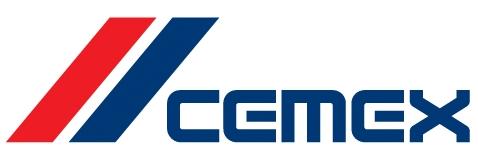Founded in 1906, Cemex is one of Mexico’s few truly multinational companies, with market-leading operations in Mexico, Spain, Venezuela, Costa Rica, Philippines, Panama, Dominican Republic, Egypt, Colombia, and a significant presence in the Caribbean, Indonesia, and the southwest United States. It is the largest cement company in America and one of the three largest cement companies in the world, with revenues of $4.8 billion and close to 65 million metric tons of production. Cemex and its subsidiaries engage in the production, distribution, marketing, and sale of cement, ready-mix concrete, and related materials. Its strategy includes focusing on cement and concrete products, diversifying globally to cushion against volatility in local markets, developing efficient production and distribution processes, using IT to help increase flexibility, improve customer satisfaction, and reduce bureaucracy and excess staffing, and providing training and education for employees. Its state-of-the-art Tepeaca facility supplies one fifth of the Mexican market and may be the lowest cost cement producer in the world, with operating costs of $25 per ton, roughly $10 lower than the industry average, and emissions far lower than legal requirements. In 1992 Cemex purchased Spain’s two largest cement companies, reviewed, their operations thoroughly, invested in facilities, and reduced the workforce dramatically, such as by consolidating 19 offices into one.
Although it was a laggard IT user through the 1980s, Cemex is now widely recognised as a company that uses IT extensively and views IT as an integral part of its long-term strategy. Lorenzo Zambrano, a Stanford MBA whose family owned a third of the stock, became its CEO at age 41 in 1985. In 1987, he hired an information system director and gave him the mandate of developing Cemex’s then primitive IT capabilities. Within a year, dispersed operations were being linked via satellite. In one case, a cement plant in a town with only 20 telephones used a satellite dish to transmit voice and data, thus bypassing Mexico’s chaotic phone system. By 1998, managers could use the satellite-based communications network to monitor operations and market conditions all over the world and to communicate using voice, video, Lotus Notes, and other technologies.
Application areas that demonstrate the importance of IT include management information and control of operations. Cemex managers can immediately link to any of the 18 plants in Mexico and immediately access the status of each cement kiln, recent production data, and even the deployment of trucks dispatched by different cement and concrete distribution centers. Financial statements are available two days after the end of the fiscal month, an endeavor that used to take a whole month. Eliminating these lengthy delays in evaluating production, costs, and sales volume helps in running a lean, low-cost operation by making it possible for management to take action quickly instead of waiting almost two months to just receive the data in some cases.
Use of IT in controlling operations occurs at many points. Cemex’s ready-mix delivery trucks are equipped with dashboard computers that allow tracking using global positioning satellite technology. A central dispatcher in a region constantly reroutes the trucks as customers cancel, delay, or speed up orders. In 1995, because of traffic gridlock, capricious weather, and labor disruptions at the construction site, Cemex could promise delivery no more precisely than within three hours of the scheduled delivery time. Such conditions often forced customers to cancel, reschedule, or change half of their orders. Today, at its largest operations in Mexico and Venezuela, Cemex is committed to delivering ready-mix shipments within 20 minutes of the scheduled time. The reason for this dramatic improvement in customer service is its dynamic synchronization of operations, which has increased the productivity of the company’s trucks by 35%. The result is significant savings in fuel, maintenance, and payroll costs, and a considerable increase in customer goodwill.
A Cemex news release in September 2000 announced the launch of CxNetworks, a new subsidiary that will build a network of e-businesses, as an integral element of its overall e-enabling strategy. CxNetworks will leverage Cemex’s assets onto the Internet and extend the reach of the company into marketplaces that complement its core business. CxNetworks will initially focus on three business areas: the development of online construction marketplaces, the creation of an Internet-based marketplace for the purchase of indirect goods and services, and the expansion of Cemtec- Cemex’s information technology and Internet consulting services company into new markets. CxNetworks is in the process of developing and will soon launch a series of online construction market places with a variety of local partners in South America, Europe, the United States, and Mexico. These businesses will offer an array of construction products, including cement, as well as online services and information to small and large contractors, builders, and other construction industry participants.
Questions For Discussion:
- How did Cemex fundamentally change the way it conducted its business?
- What role do information systems play in Cemex’s strategy and business model?
- How much do information systems help Cemex deal with its problems and compete in the industry?
